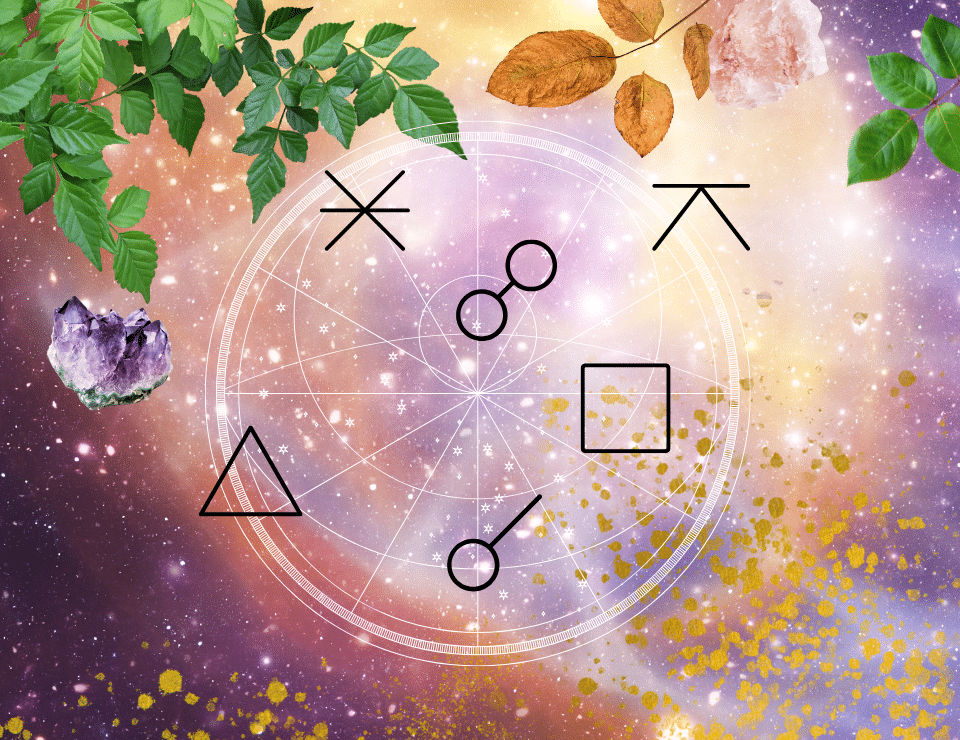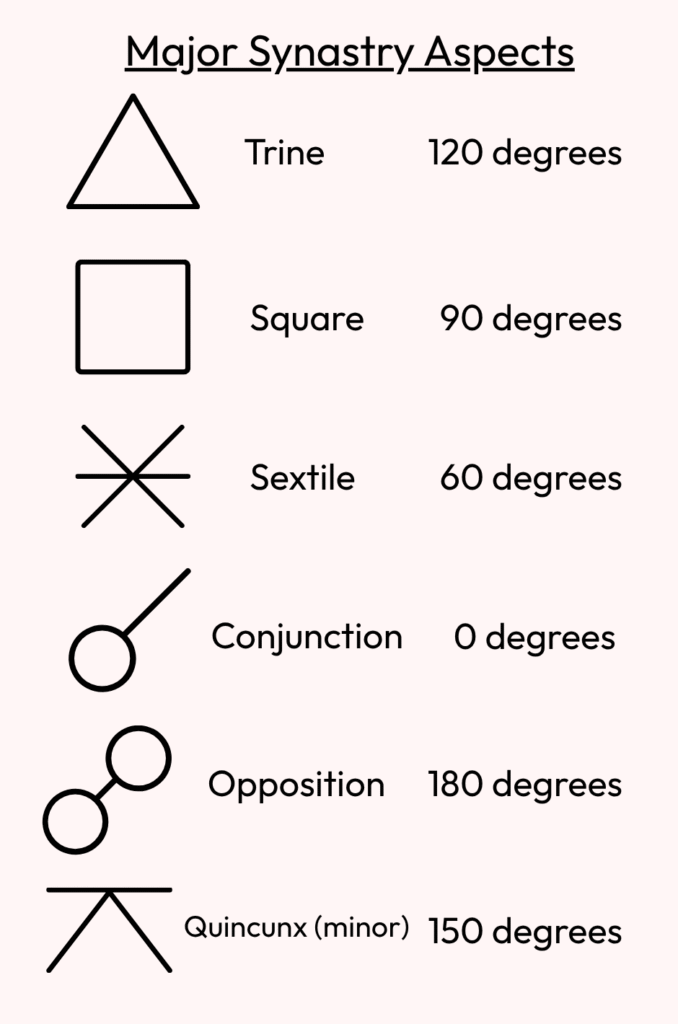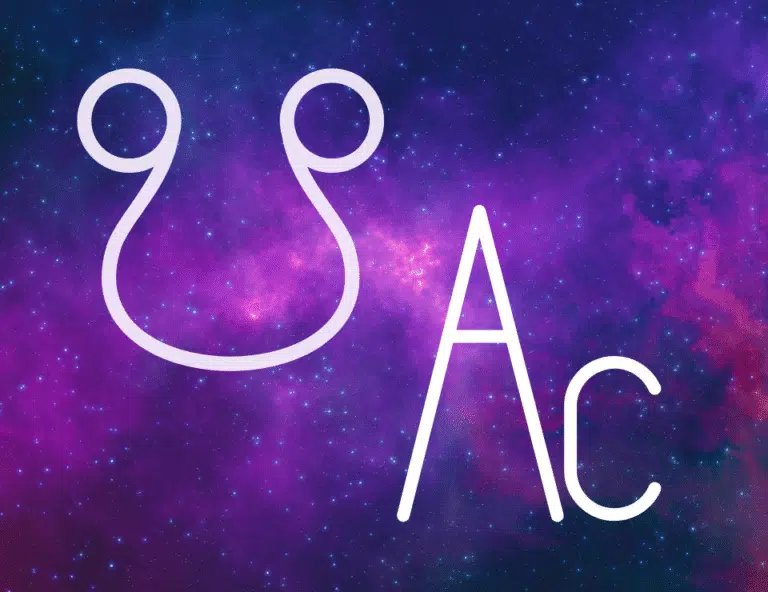
What Exactly is Synastry?
Synastry is how you relate to one another. Layering one person’s chart over another person’s chart to look at the aspects that are made between them. For instance, person A has their Moon in person B’s 6th house. There are normally a fairly long list of aspects made for every comparison. The aspects which have a smaller orb number — typically 0-3 degrees — are the most potent and therefore influential.
Synastry shows us, in quite a lot of detail I might add, what our relationships are like. And not just our romantic relationships! Our platonic connections too. Any connection with another person — or being. Some people even use synastry charts to learn more about their relationship with their pets.
Every bit of the chart should be assessed, ideally, to get a true picture of how you relate to one another. Most people, and some synastry calculators, only identify and read about the planetary aspects but there’s a great deal more to examine.
The houses offer vital, in-depth information about your connection. This is especially true of the first house of personal identity, the fourth house of home and family and the seventh house of relationships and marriage. The asteroids, in particular, Chiron, can offer valuable information on the most challenging parts of your relationship.
In my opinion, there’s no point in just looking at the major synastry aspects or just the planetary ones. Every bit of the birth chart; all planets, all chart points (calculated points like the Nodes and the Liliths), asteroids and comets, hold valuable and unique bits of information that could very well help you to make the most out of your time together.
What Are All of the Possible Synastry Aspects?
These are the same as the natal aspects. I’ve got a whole — very long — article on all the aspects called How Planets Interact in Astrology: Major and Minor Aspects.
But to keep things simple, here are all the major and minor synastry aspects:
Major Synastry Aspects
- Trine (120°). Very positive.
- Square (90°). The most challenging of aspects anywhere in astrology.
- Sextile (60°). Very positive.
- Conjunction (0°) (most common aspect type). These are mostly positive.
- Opposition (180°). A largely challenging aspect.
Minor Synastry Aspects
- Quincunx (150°) (better known as Inconjunct). A very strange word and an ambiguous aspect.
- Semi-sextile (30°). Overall positive.
- Semi-square (45°). Not so positive but not entirely negative either. Small disagreements and tensions.
- Sesquiquadrate (135°). What frustrates us about the other person. Mostly negative.
- Quintile (72°). Creative and/or unique bonds. Positive.
Here’s what the major aspects (as well as the lesser, rather neutral aspect, Quincunx) look like so you can identify them quickly:

What Does Composite Mean Then?
I was very confused by synastry when I began learning astrology many moons ago. I was even more confused when I found out about composite astrology! So I don’t blame you if you’re a bit stuck on it.
Composite charts depict the energy of the relationship itself as an independent entity. What it feels like to you both and how others perceive it as an entity all of its own. I think that when two people come together they do indeed create a whole new life as a couple and that life is like a new creature all by itself. I would imagine that many, if not most, people who have been single for long periods and been in committed relationships for long periods know what I’m describing here.
The term composite in astrology describes what the relationship itself is like as an independent entity; as if it were a living being itself. I know this might sound a bit strange but here’s an example of the difference between synastry and composite:
Two past clients of mine, Melanie and Jake, were together for four years before having a synastry chart drawn up for them so they could better understand how they related to one another, how their union could be improved, and so on. I saw that there were a good number of sextiles (positive aspects) but also a hefty helping of squares (challenging aspects).
What Is Synastry Really Worth? Does It Indicate True Love, Relationship Longevity, Etc?
Well, like everything in life — every connection, every choice we make, every job we have, etc — there are pros and cons. It’s extremely likely that your relationship, whether romantic or platonic or professional, will have many positive aspects as well as a few not so positive aspects. Truly, the connections we have with others are what we make of them. Freewill choice also plays a huge part in dictating the course of any given relationship.
Sources:
Sue Tompkins: Aspects in Astrology: A Comprehensive Guide to Interpretation. Element Books.
This content, like all content on Stars & Paths Astrology, is entirely human-made. Please feel free to bookmark and share.






